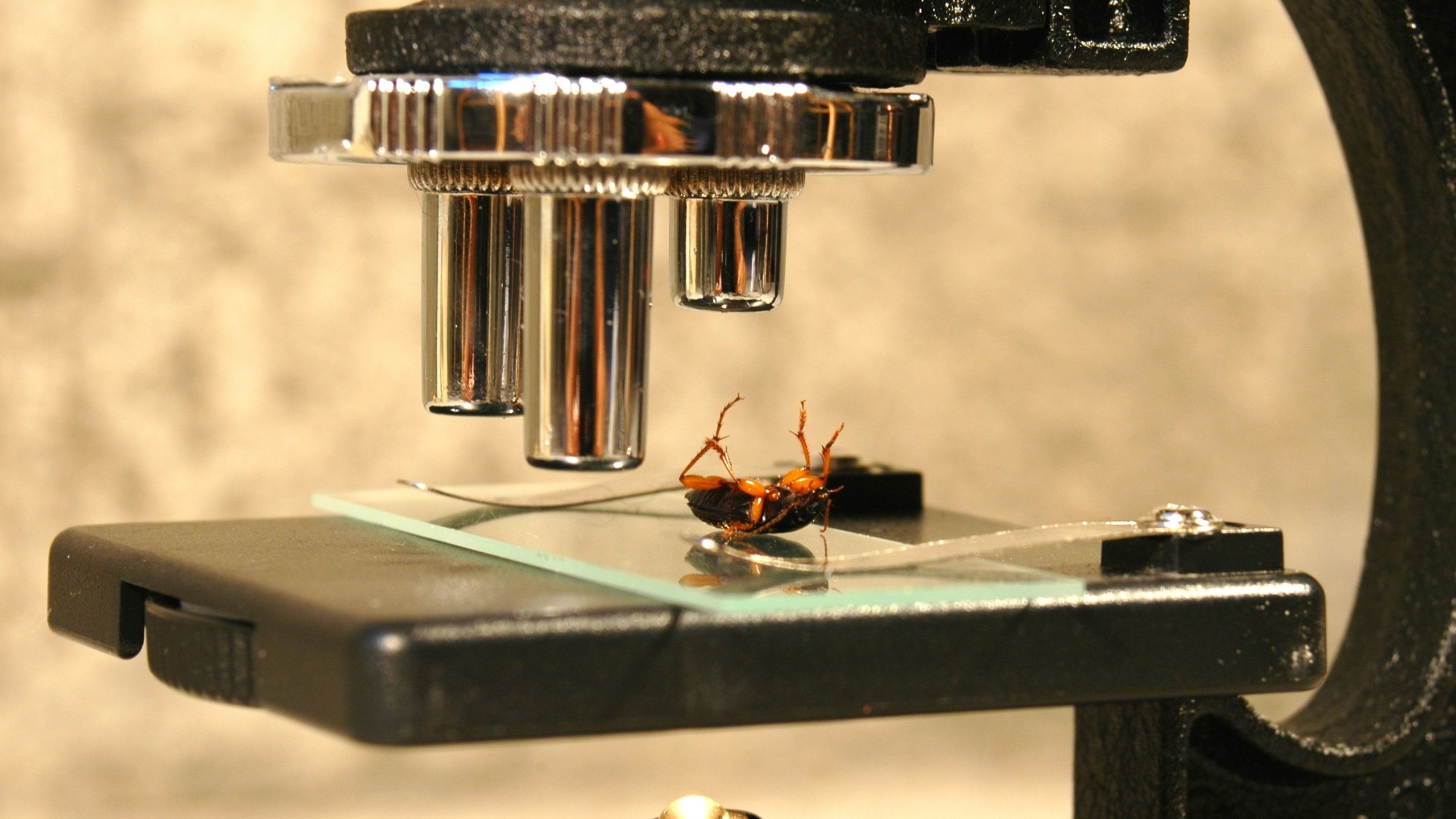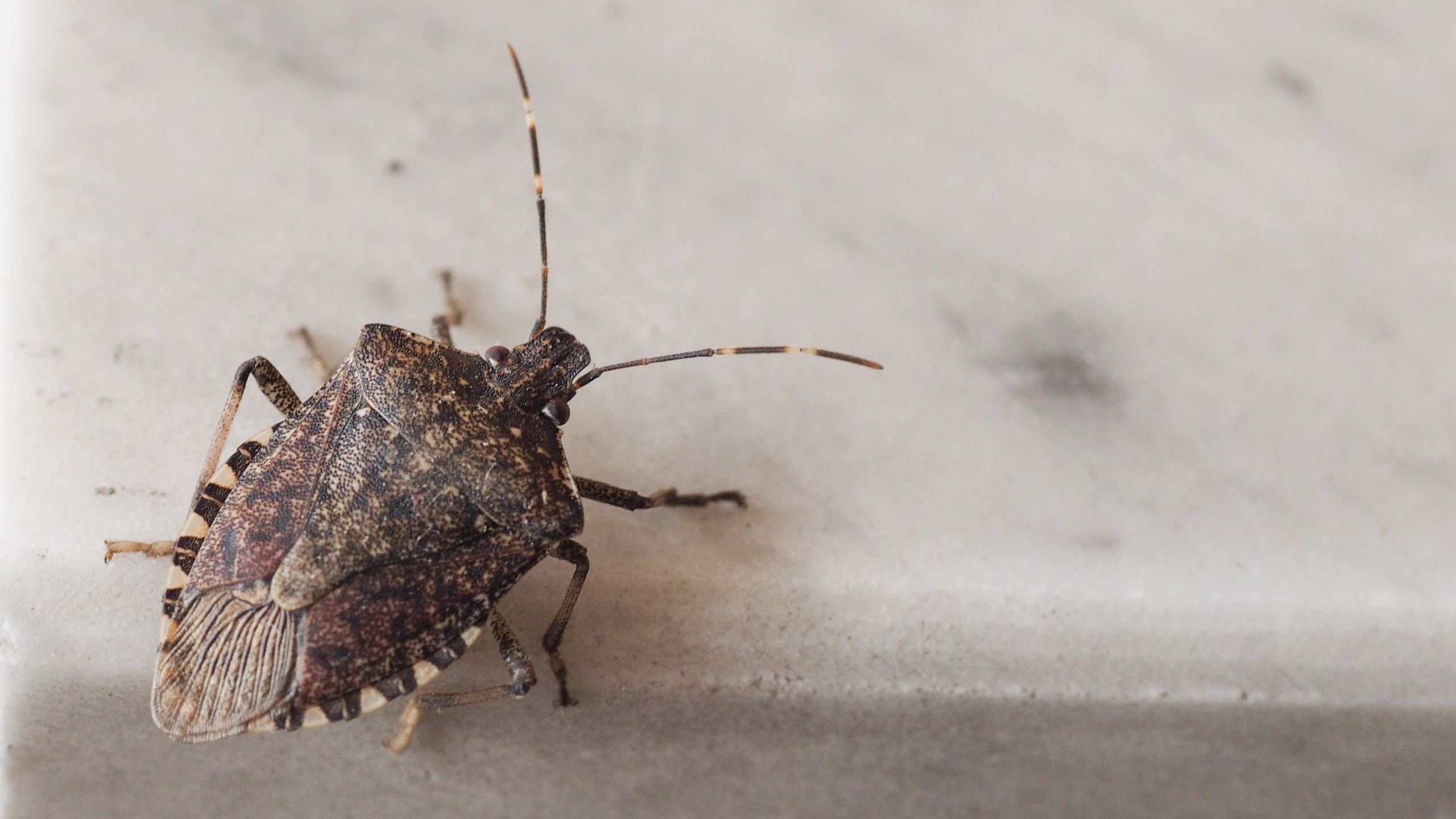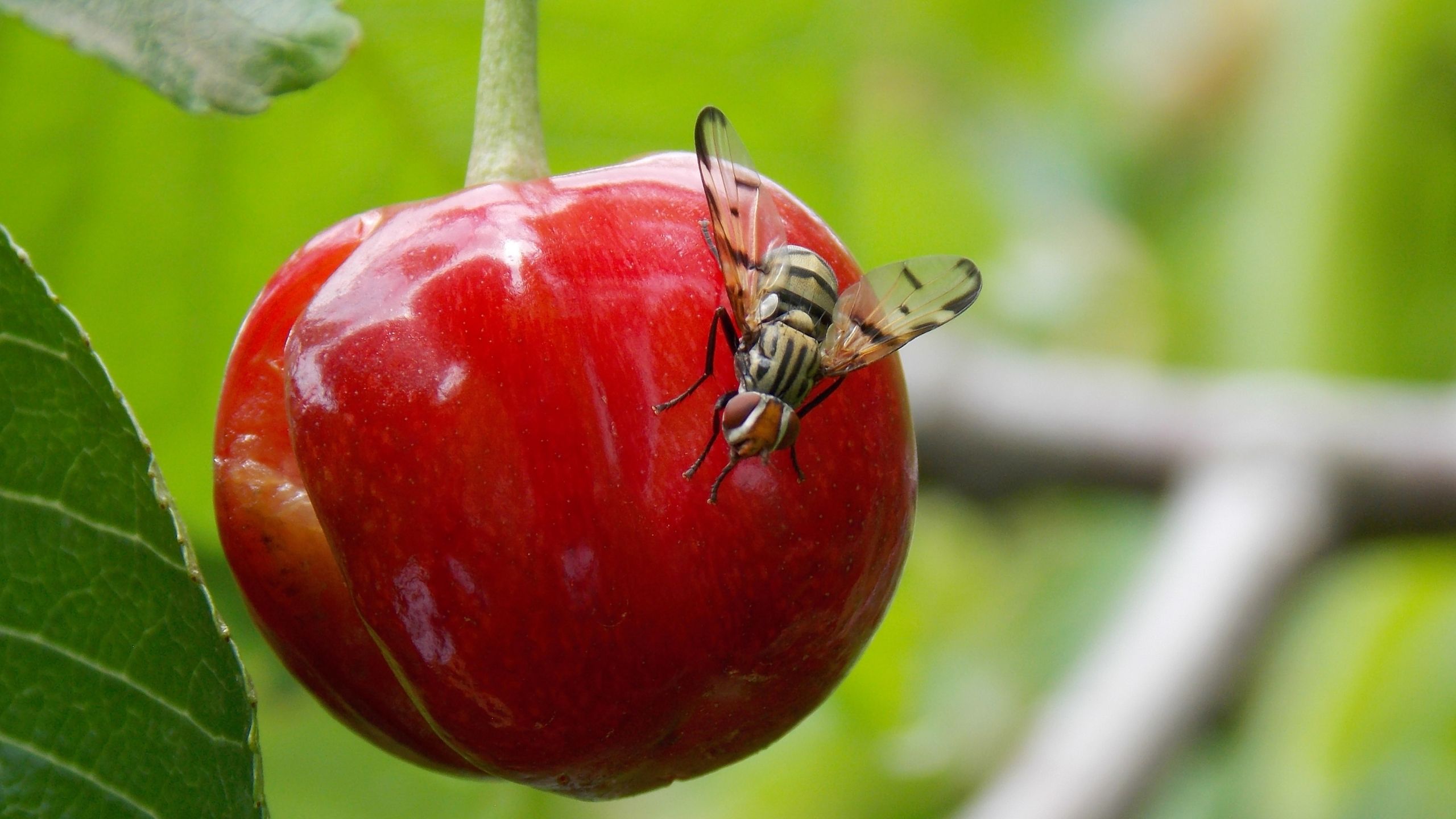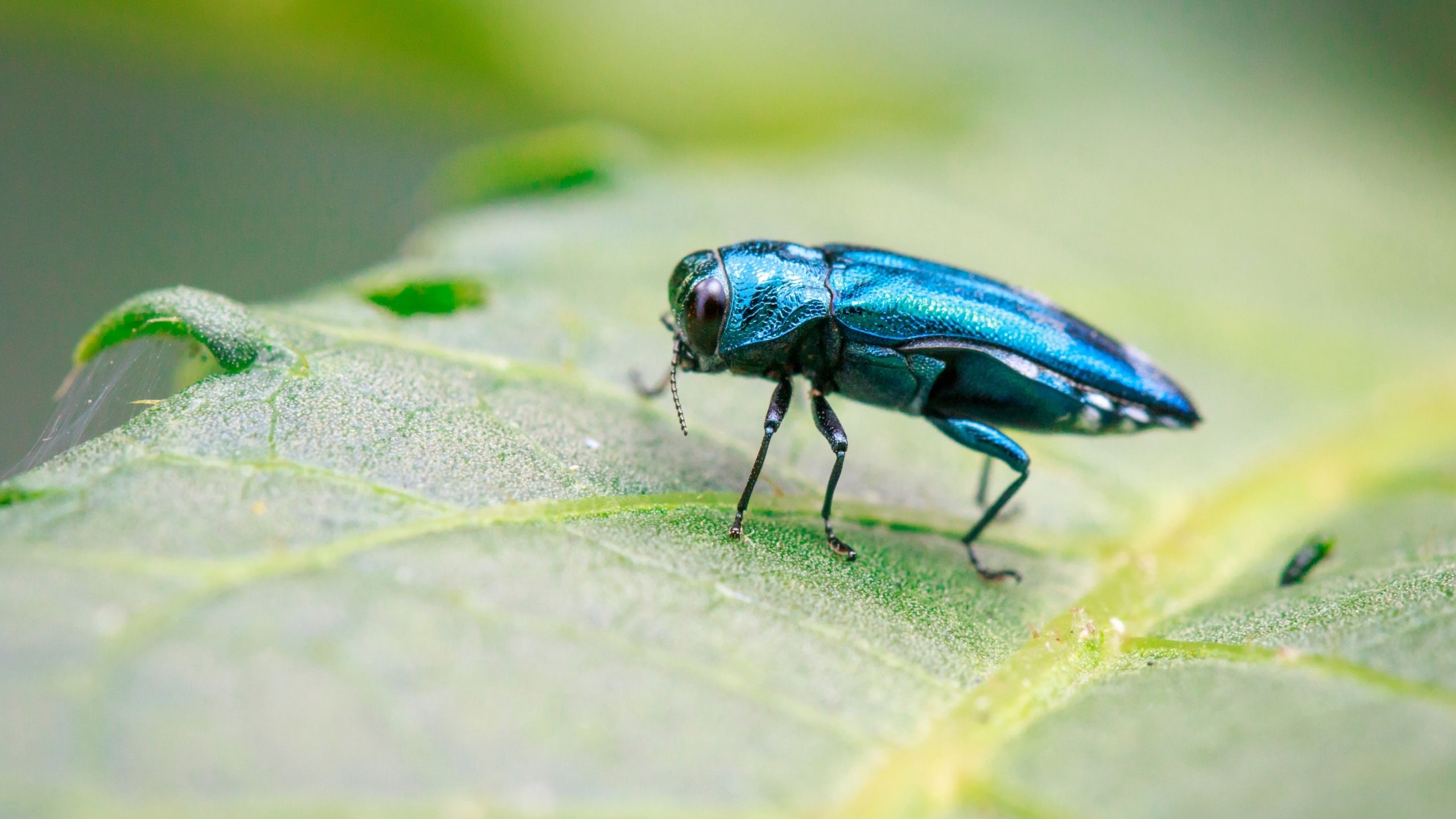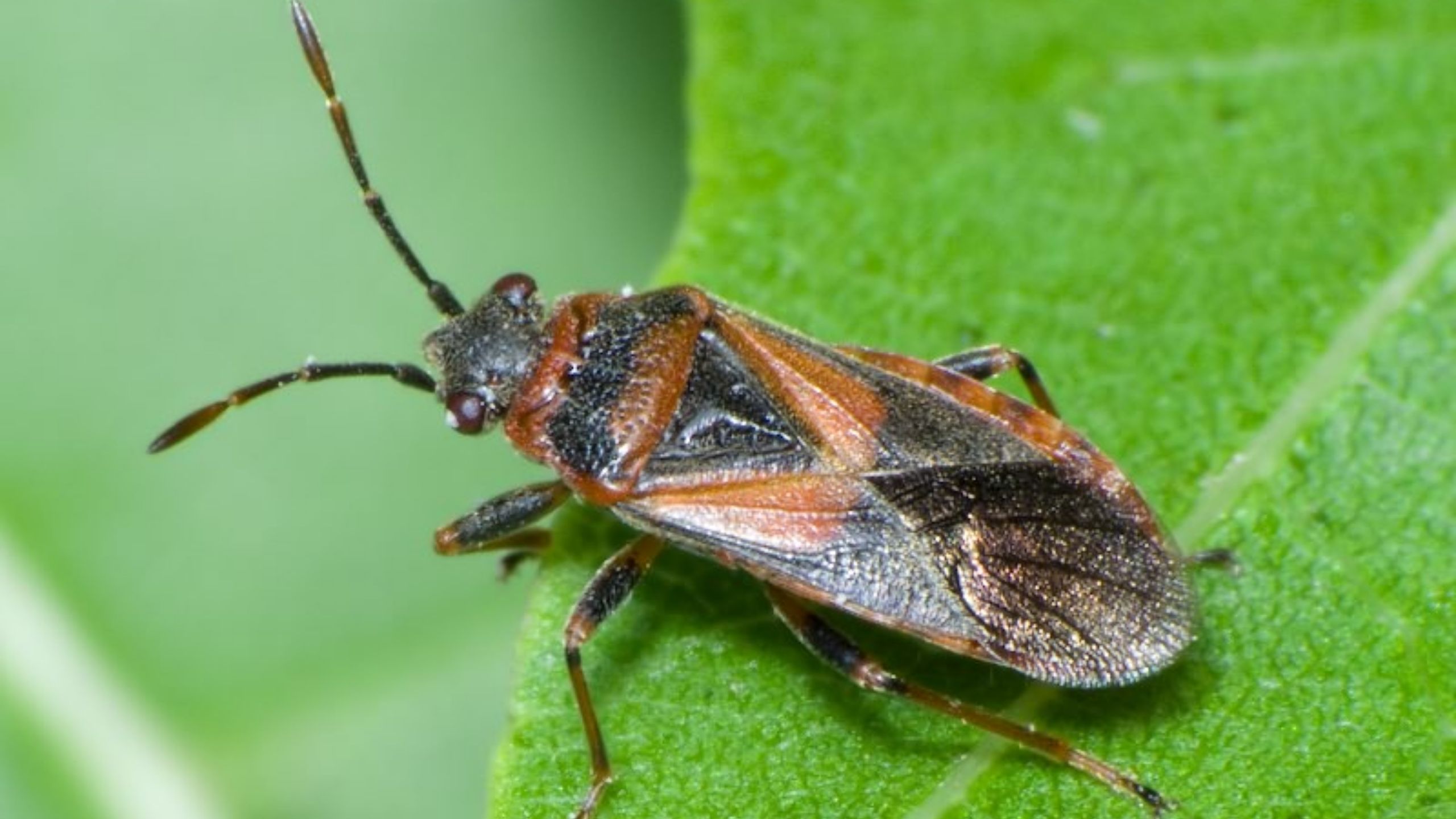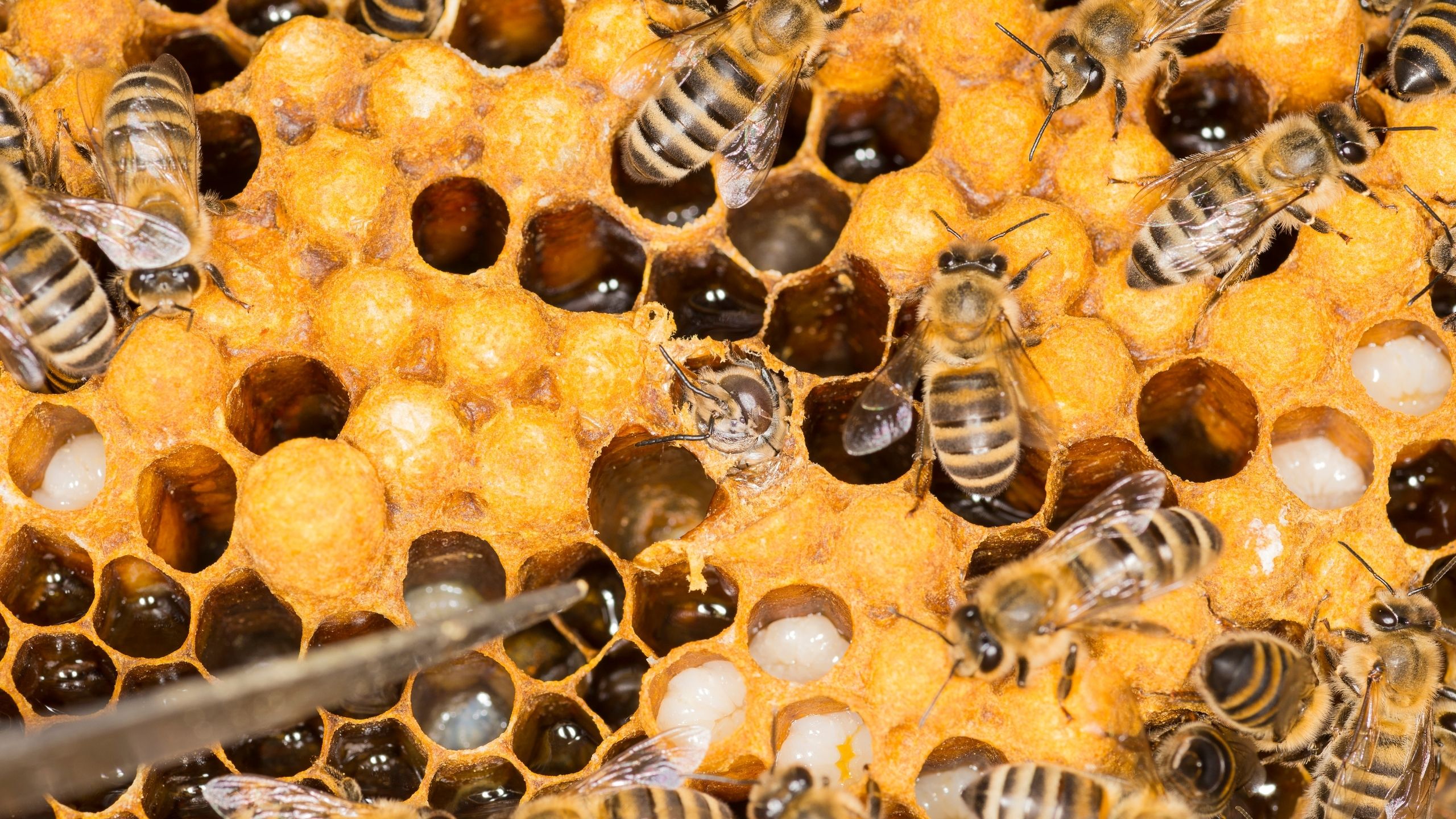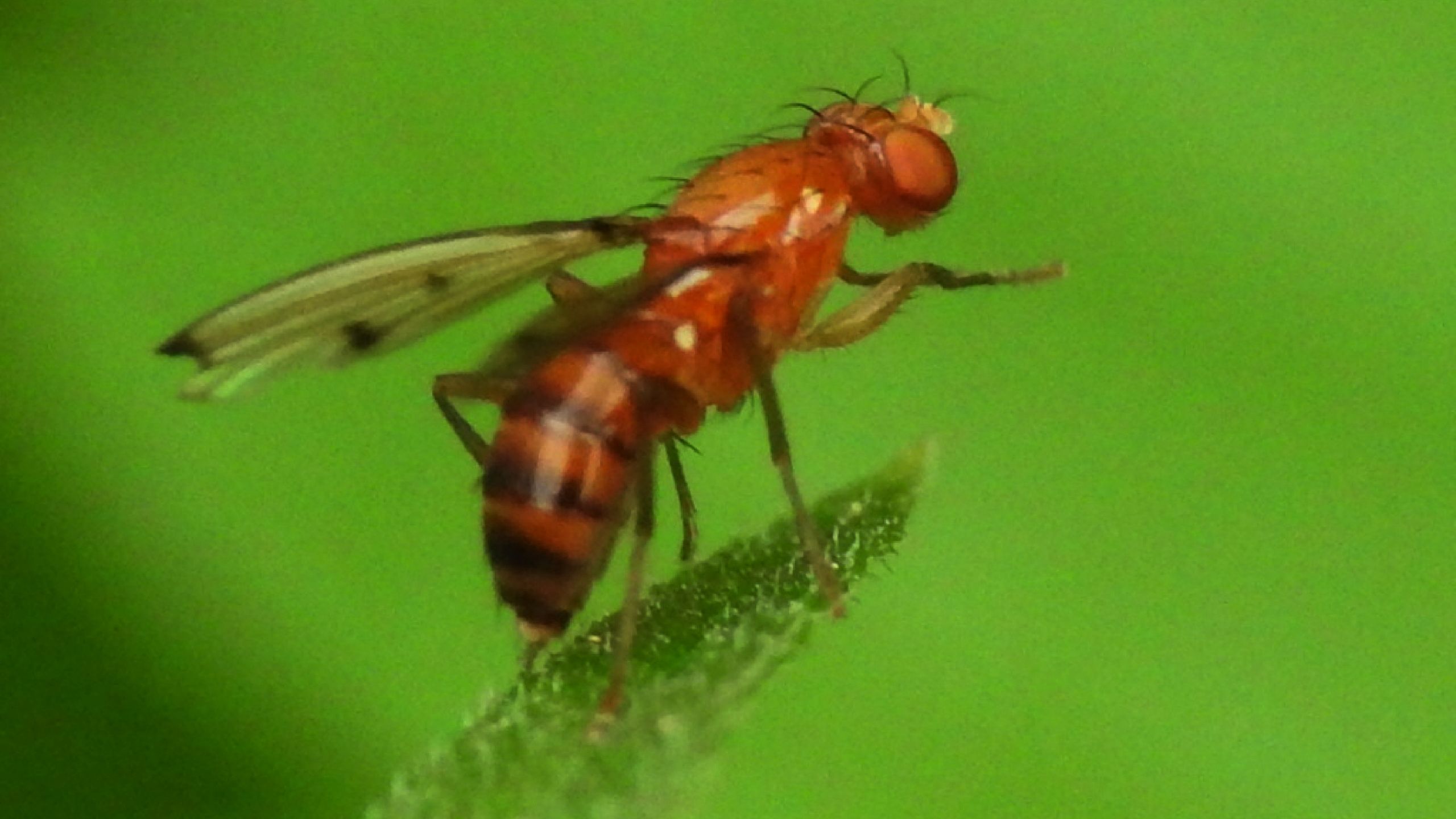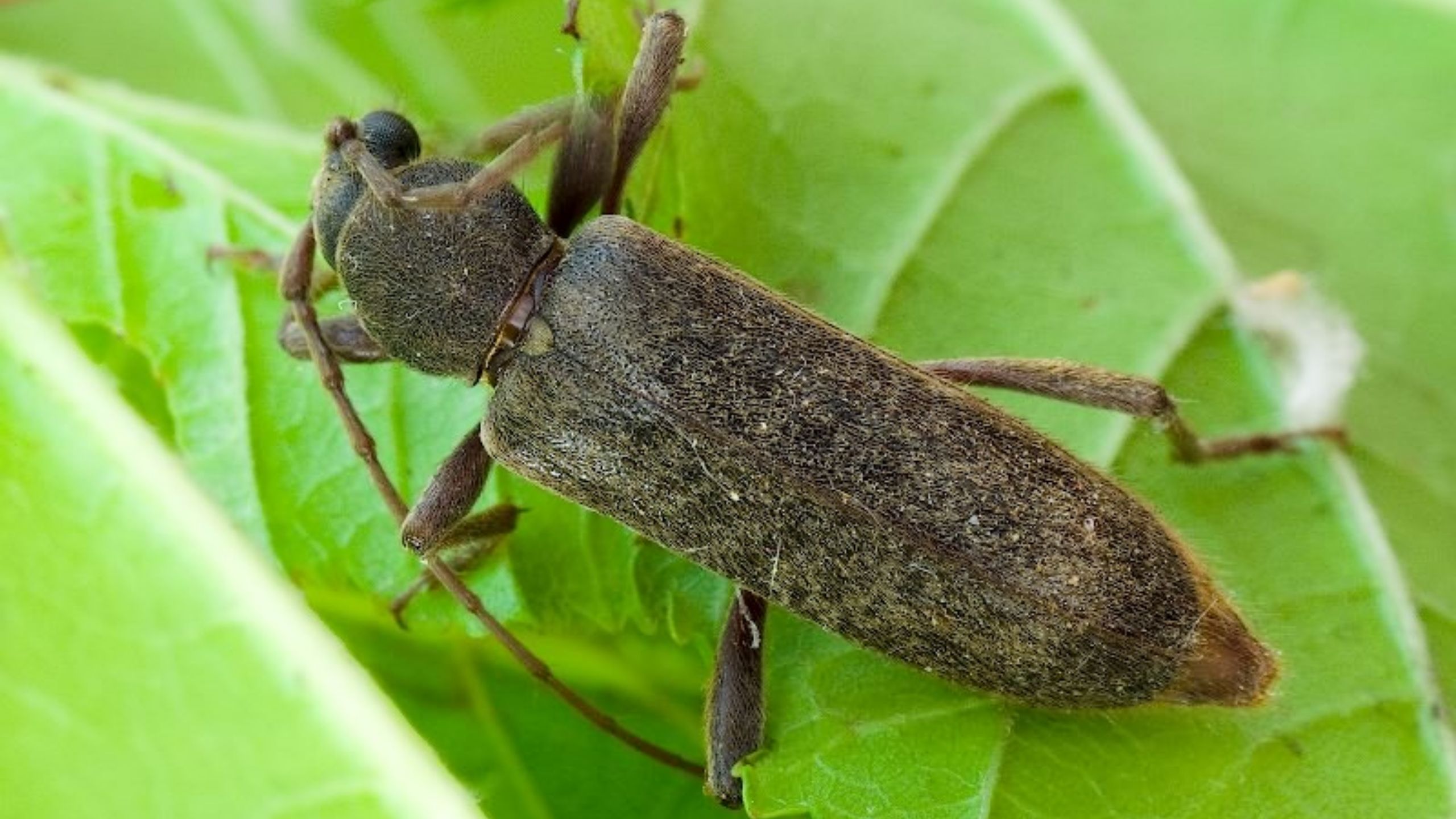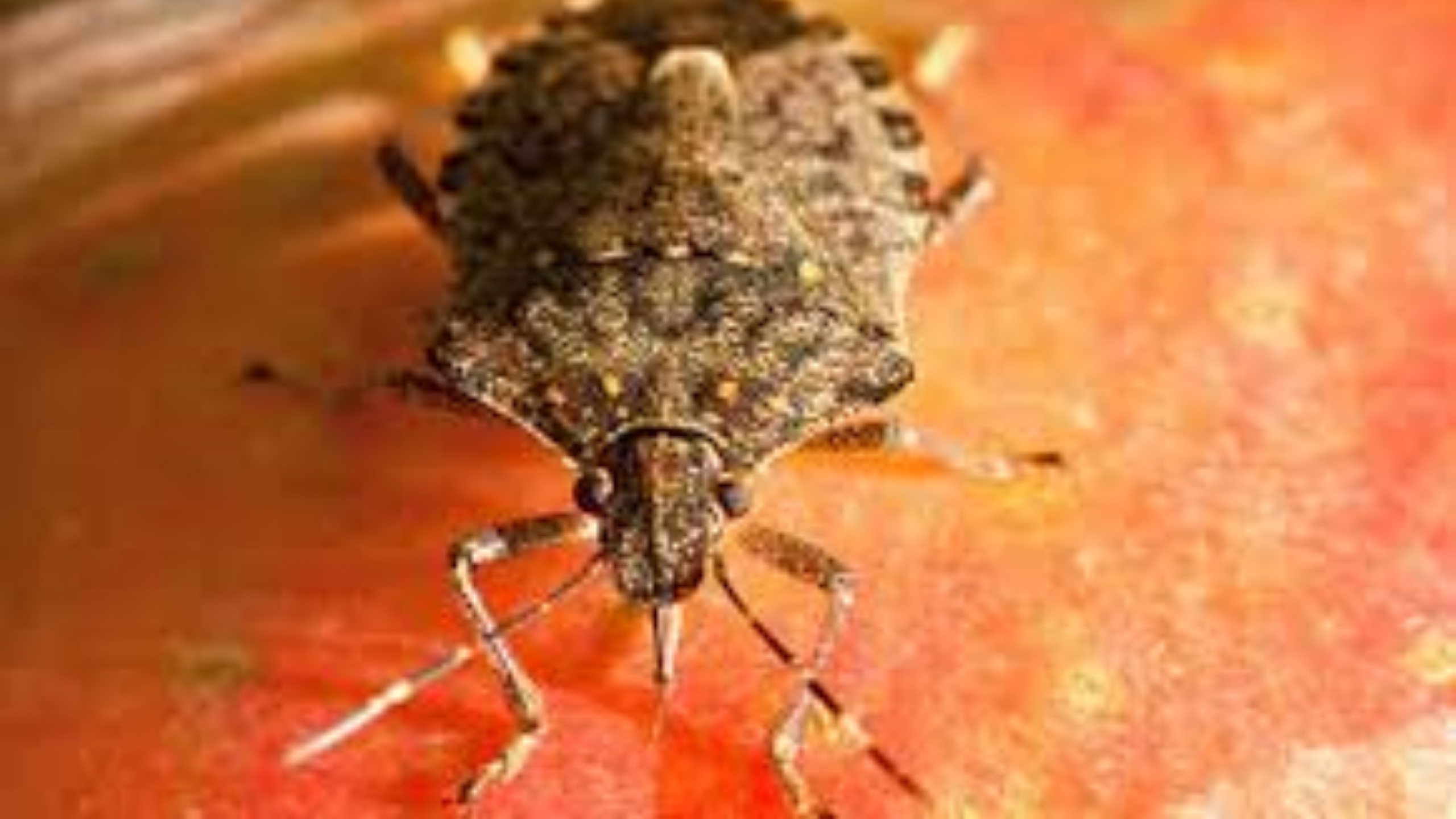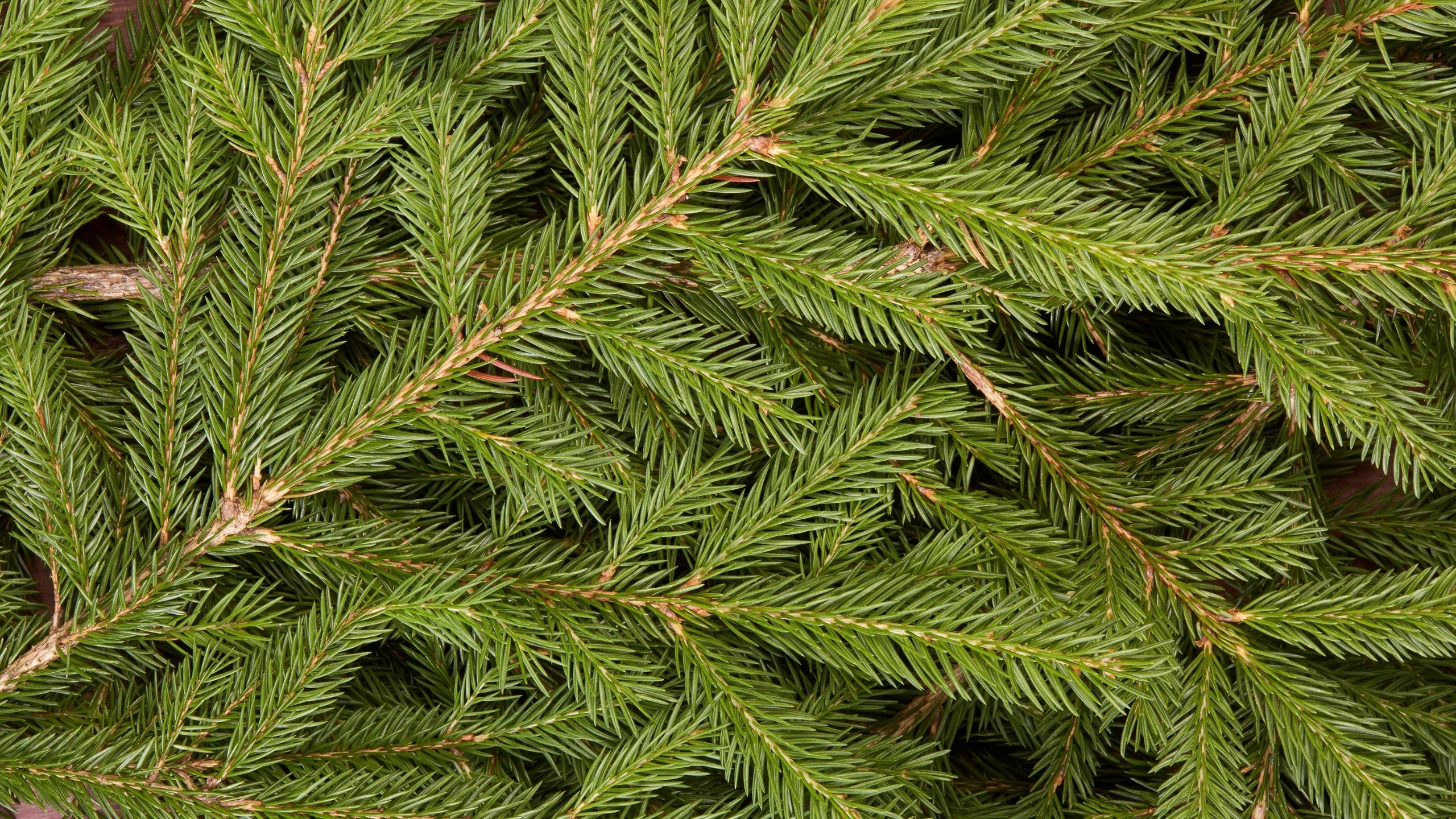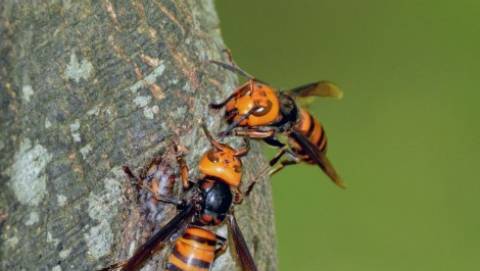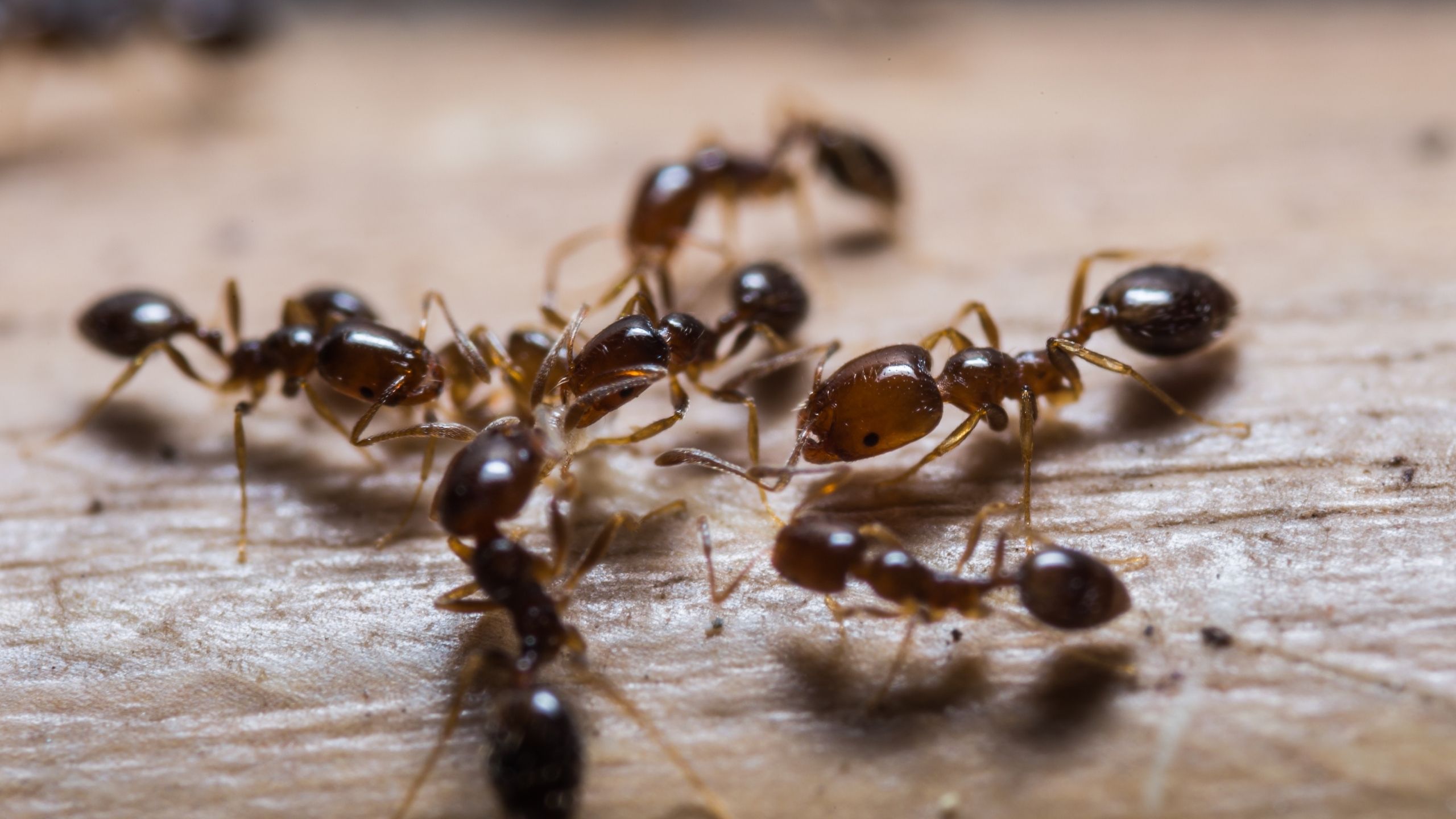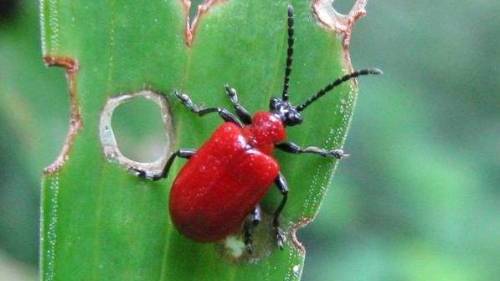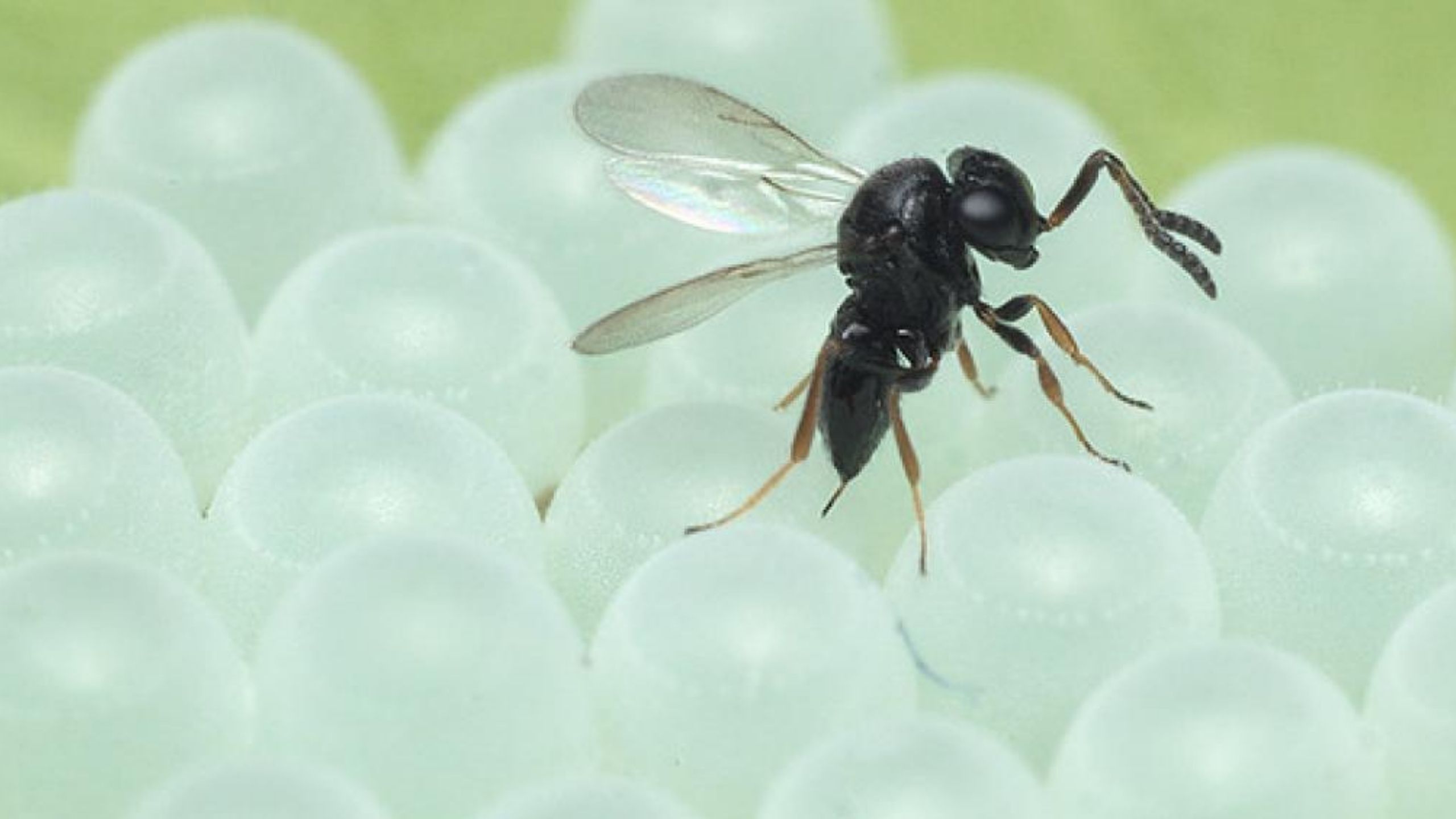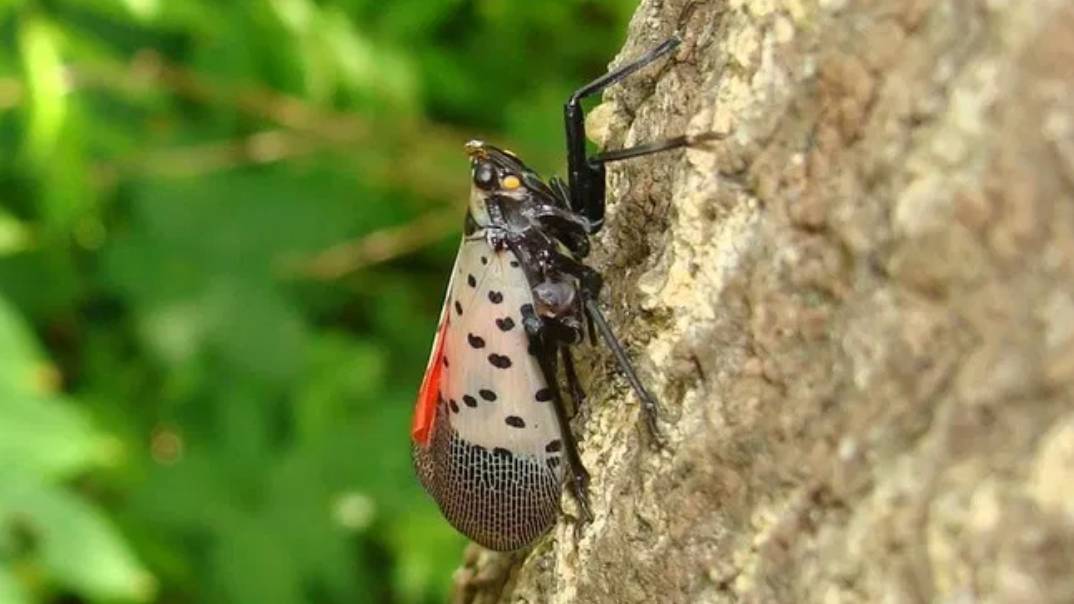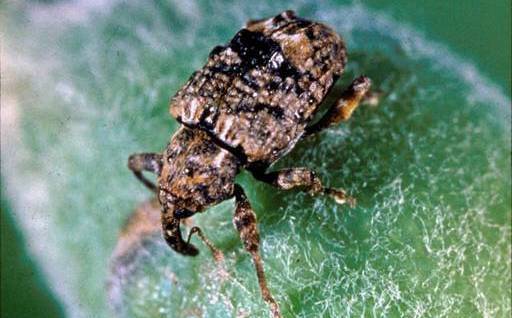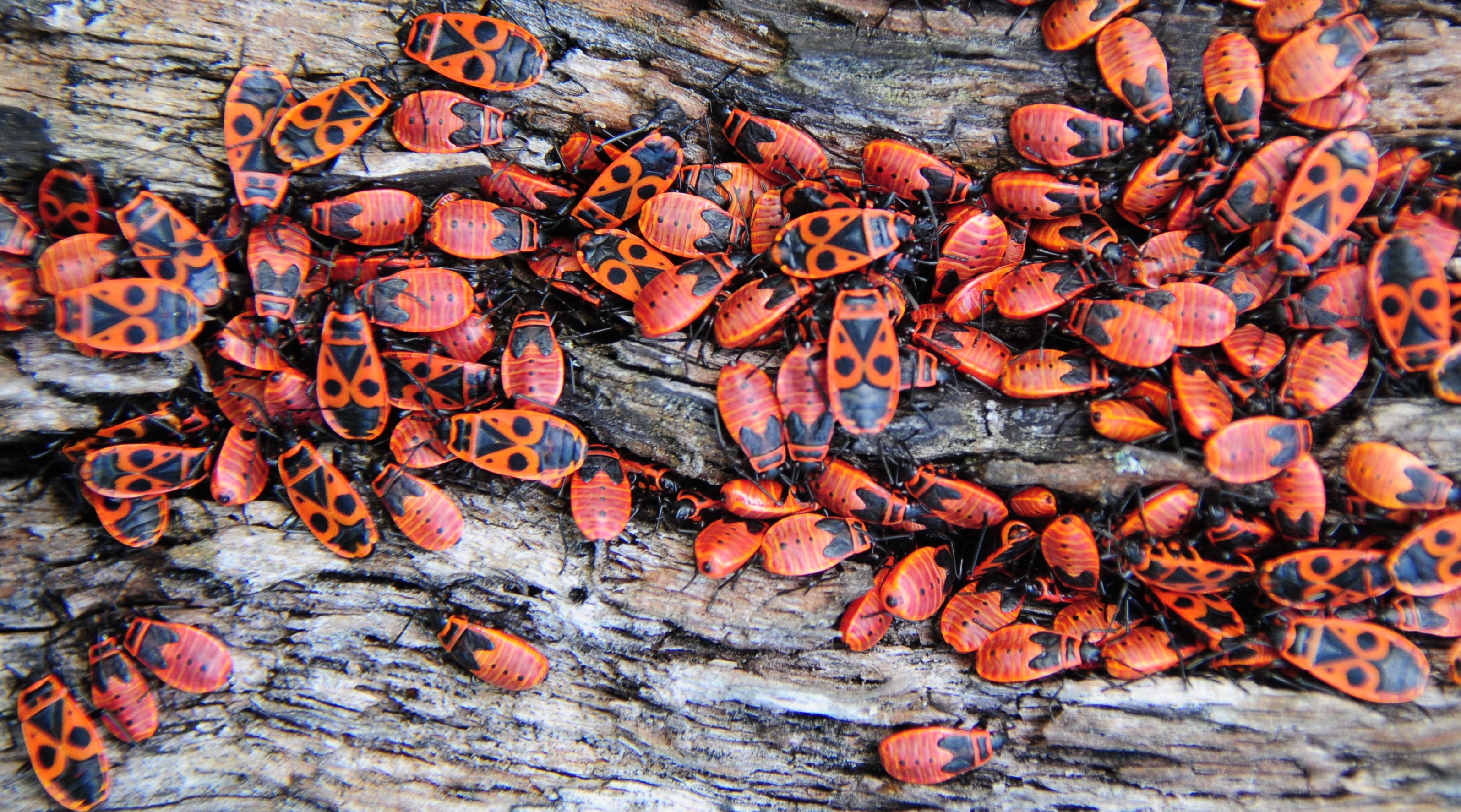Imported Fire Ants
[Solenopsis invicta (Buren) and Solenopsis richteri (Forel)]
March 2020
Ann Mull, Extension Assistant (No longer at USU) • Lori Spears, Extension Entomologist (No longer at USU) • Ryan Davis, Arthropod Diagnostician (No longer at USU)
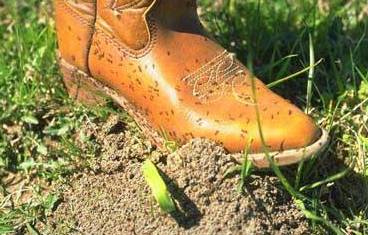
Fig. 1 Red imported fire ant (IFA) workers swarming a boot. Image courtesy of Bart M. Drees, Texas A&M University.
Quick Facts
- Imported fire ants (IFA) represent two South American species: red imported fire ant and black imported fire ant.
- IFA occur in the southeastern U.S. and in parts of California and other western states. They are NOT known to occur in Utah, but parts of southwestern Utah are suitable for IFA establishment.
- IFA can cause agricultural, ecological, economical, nuisance, and public health problems.
- When a nest is disturbed, IFA will exit the mound in large numbers to bite and sting repeatedly, injecting painful venom with each sting.
- Stings can cause persistent “fire-like” pain and blistering pustules--which when broken can result in secondary infections and scarring--and allergic reactions, including rare instances of seizures and anaphylactic shock.
- Although IFA can spread naturally by flying short distances, long-distance spread is caused primarily by the movement of infested materials, such as baled hay and straw, nursery stock, grass sod, soil, honeybee hives, and vehicles and equipment.
- Five native Solenopsis ant species occur in Utah, but they are not known to be aggressive and their colonies are small and inconspicuous.

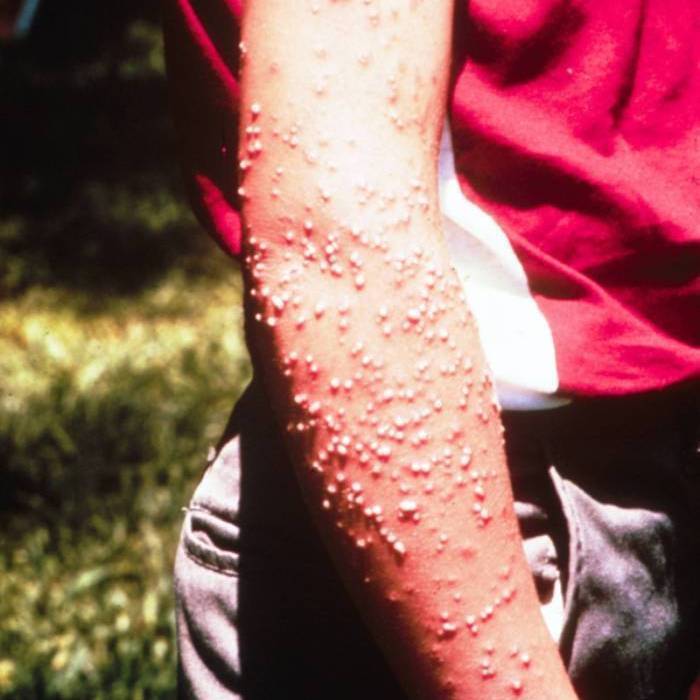
Introduction
Imported fire ants (Order Hymenoptera, Family Formicidae) (IFA) (Figs. 1 and 2) are social insects representing two South American ant species: the red imported fire ant (Solenopsis invicta Buren) and black imported fire ant (Solenopsis richteri Forel), along with their hybrid offspring. IFA are native to South America, where their colonies are kept in check by native competitors, predators, and parasites. However, they have invaded other countries, including Australia, New Zealand, and the U.S., causing agricultural, ecological, economical, nuisance, and public health problems (Fig. 3), which are described in more detail below (see ‘Impacts’ section). IFA were first detected in the U.S. in Mobile, Alabama, likely arriving in soil used as ship ballast in 1918 (black IFA) and the late 1930s (red IFA). Although IFA can spread naturally by flying short distances, long-distance spread is caused primarily by the movement of infested materials, such as baled hay and straw, nursery stock, potting media, grass sod, soil, honeybee hives, and trains, vehicles, and equipment. IFA is a quarantine pest, and its presence can restrict movement of regulated articles.
IFA currently occur in Alabama, Arkansas, California, Florida, Georgia, Louisiana, Mississippi, New Mexico, North Carolina, Oklahoma, South Carolina, Tennessee, Texas, Virginia, and the commonwealth of Puerto Rico. Isolated infestations have been reported in Arizona, Kentucky, Maryland, Oregon, and Washington. The red imported fire ant has a wider distribution than the black imported fire ant, which has only been reported in Mississippi, Alabama, and Tennessee (USDA 2019). In colder regions, IFA may be able to temporarily establish during unusually warm years, or in settings where a heat source exists, such as climate-controlled buildings and greenhouses (Global Invasive Species Database 2019). IFA are NOT known to occur in Utah, but parts of Washington, Iron, and Kane Counties may be suitable for colony establishment, particularly in areas that have accessible water from irrigation or natural sources (Korzukhin et al. 2001, Sutherst and Maywald 2005). If you suspect IFA in Utah, contact the Utah Plant Pest Diagnostic Lab.
Description
Although IFA can be identified by its physical characteristics, the quickest way is by observing the colony’s immediate and aggressive behavior when the nest is disturbed. IFA will swarm from the mound by the hundreds and sprint up surfaces, clamping onto victims with powerful jaws and stinging repeatedly. This reaction is almost instantaneous in temperatures of 55-95 °F (USDA 2019).
All IFA adults have two rounded nodes on their petiole (thin “waist” part of the abdomen), and each antenna has 10 segments, the last 2 resembling a club (Fig. 4).
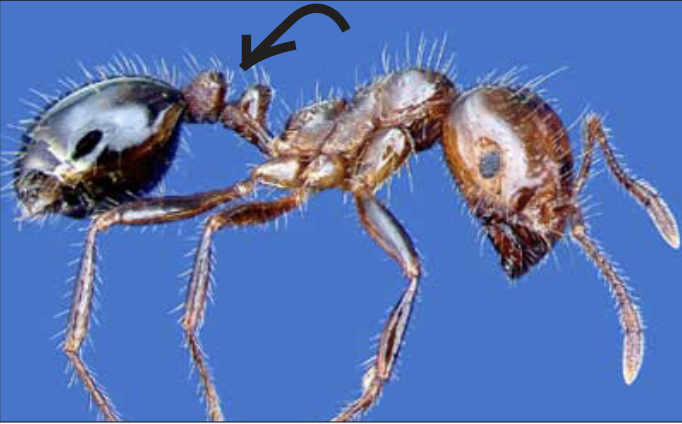

Reproductives
Queens are about 3/8 inch (1 cm) in length and have wings until just after mating (Fig. 5). Their antennae have an elbow-like bend, and their abdomen is elongated. Red IFA queens are light reddish brown in color, while black IFA queens are dark brown to black with an orange-yellow spot on the back of the abdomen (gaster). Hybrid queens look like either of the parent species or a combination of the two. Male reproductives of both species are winged and dark in color with much smaller heads and non-elbowed antennae (Fig. 5).
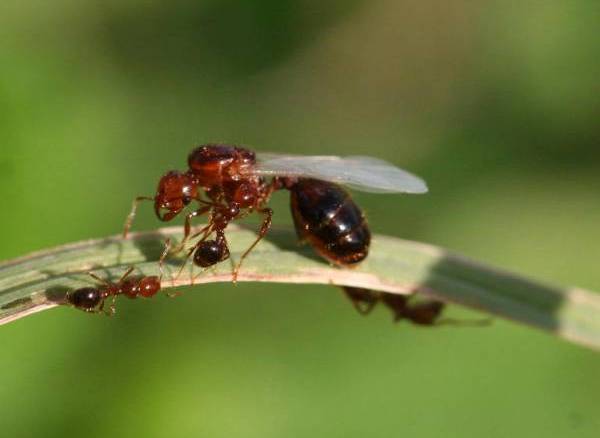
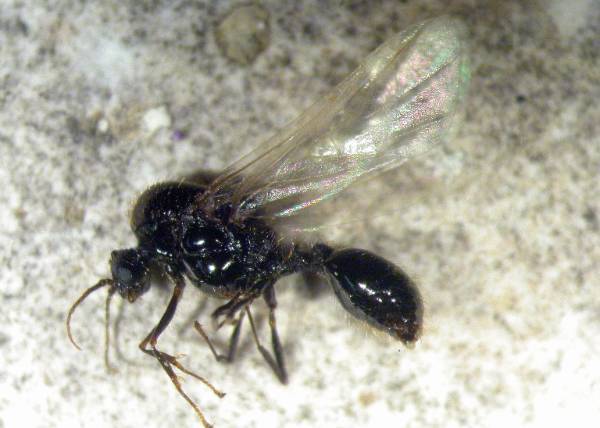
Fig. 5 An unmated red IFA queen with workers (left image); a red IFA male depicting the typical wings, smaller head, dark coloration, and nonelbowed antennae (right image). Image courtesy of Johnny N. Dell, Bugwood.org (left image); Jake Farnum, Bugwood.
org (right image).
Workers
Worker size varies within the colony, ranging from 1/16 inch to 1/4 inch (1.5 to 6 mm) in length (Fig. 6). The abdomen is short and round with a stinger at its tip. Coloration is similar to their respective queen. Workers are the most commonly observed life stage.
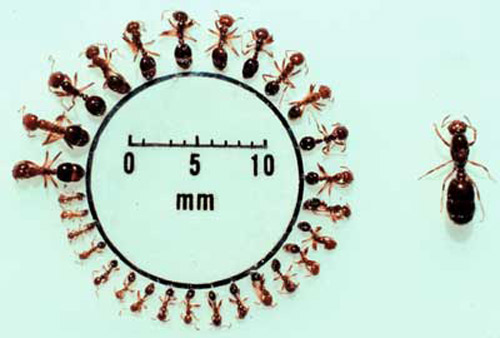
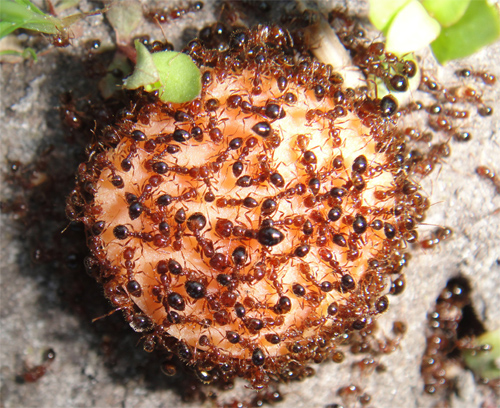
Since many ants look similar to IFA, microscopic examination by a trained entomologist is needed to confirm the identity of suspected IFA. IFA may be confused with aggressive native ant species commonly found in Utah, including harvester ants (Pogonomyrmex spp., also called “red ants”) and thatching ants (Formica spp., also called “field ants”) (Fig. 7). Harvester ants also bite and sting and inject painful venom, but their active mounds (Fig. 7) have no vegetation, are covered with small gravel, and have above-ground nest entrances and trail systems. Thatching ant nests are mounds or flattened areas covered with thatch (Fig. 7), and they use surface trails. They bite and spray formic acid, but cannot sting.
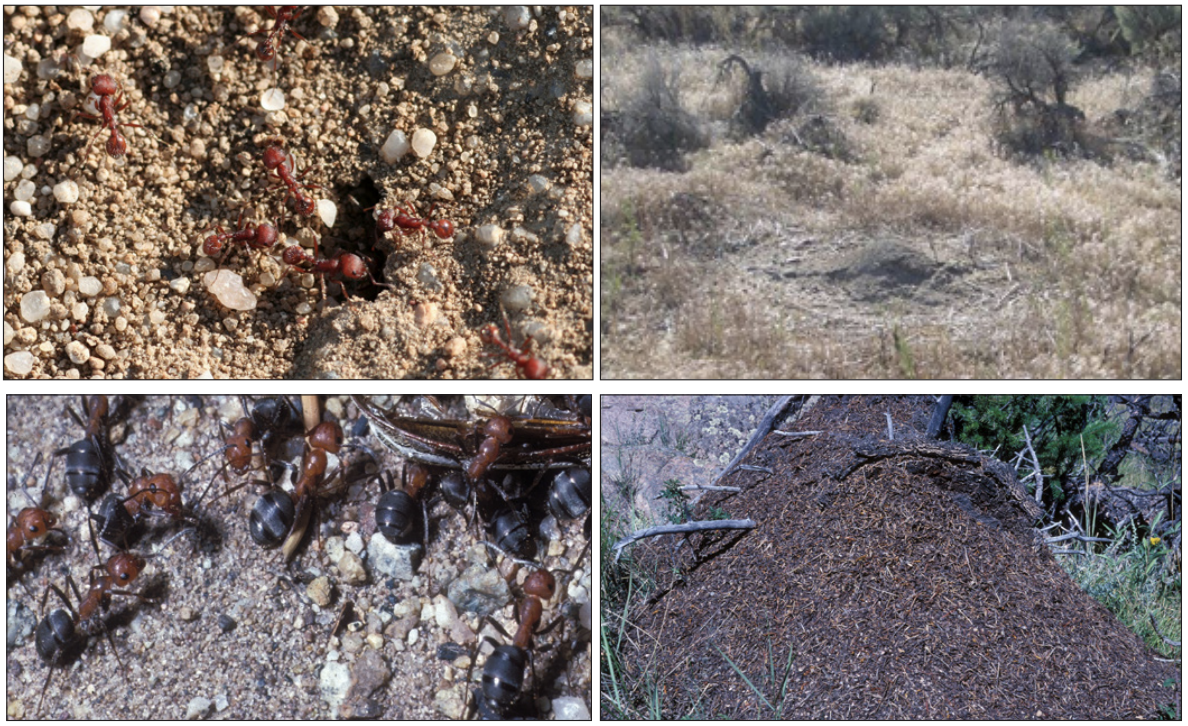
Brood
Brood (immature life stages) includes eggs, larvae, and pupae (Fig. 8). Eggs are tiny, oblong, and white to cream in color. Larvae are legless, cream-colored, and kidney-shaped with Velcro-like recurved hairs. Pupae resemble pale, shiny white adults and darken as they mature.
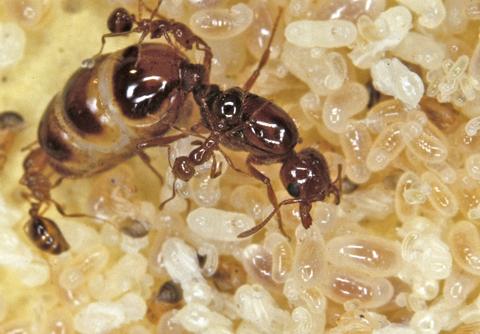
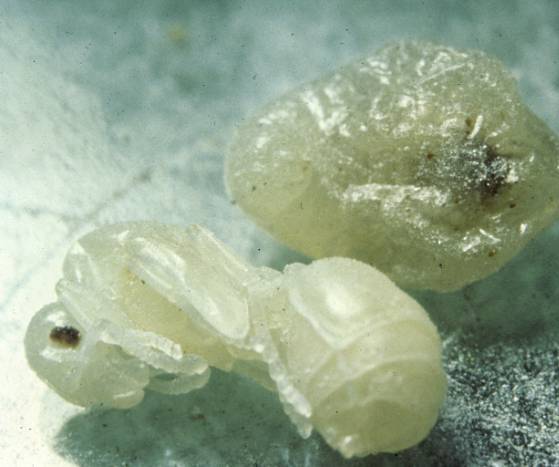
Nest
The IFA nest (Figs. 9 and 10) is typically a dome-shaped mound of excavated soil that has no visible entrance, as the ants enter and exit through underground tunnels. The mound may be 12 inches or more in height, 10 inches or more wide, and 3 feet or more in depth. However, mound dimensions vary with age, soil type, and moisture level. Mounds built in clay soils are often larger than those in sandy soils, whereas mounds built in turfgrass are typically only a few inches tall due to mowing that removes the raised part of the mound. New nests are small and easily undetected. Undisturbed nests can reach over 3 feet in height and width (Lofgren et al. 1975), and mature colonies can have over 200,000 ants (Tschinkel 2006).
Mounds are often located in open, sunny areas, against structures, along field edges, at the base of trees or bushes, along fence rows, under sidewalks, and in disturbed areas such as cleared pastures, parks, pipelines, powerline rights of way, open areas near streams, and near new roads and construction sites. Occasionally IFA will nest in structures such as tree trunks, rotten logs, walls of buildings, and in outdoor electric and water utility housings (UCANR 2013, USDA 2019). Take care to not confuse mounds made by pocket gophers (Thomomys spp.) (Fig. 11) with mounds made by IFA. Pocket gopher mounds typically are fan-like in shape and have a central hole that is filled with a soil plug.
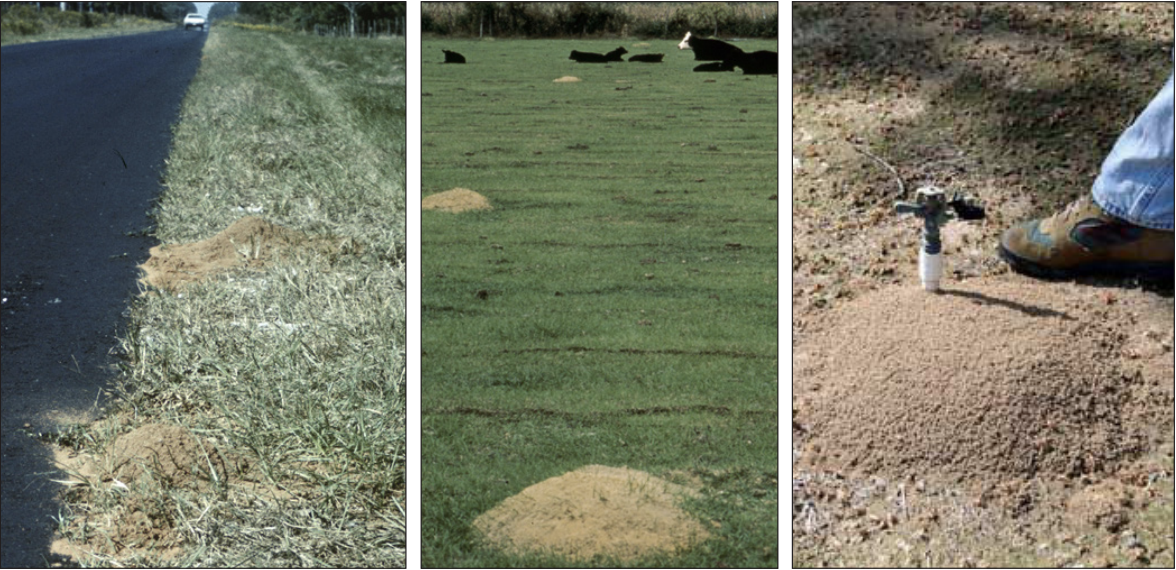
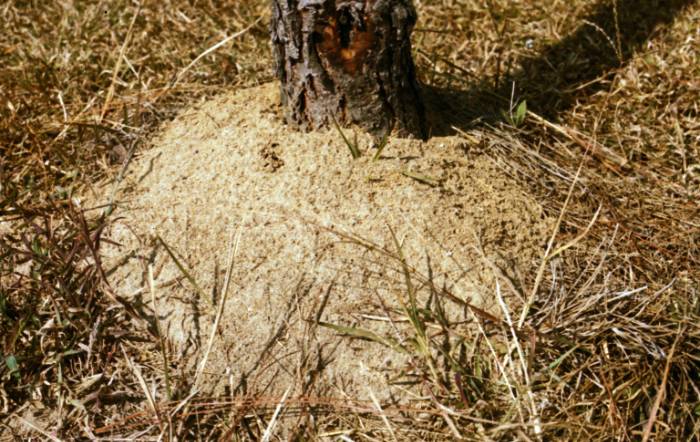
Bugwood.org .
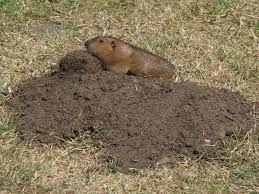
the Creative Commons public license.
Life History
IFA have four main life stages: egg, larva, pupa, and adult. The IFA life cycle begins with the nuptial flight, when the male and female “reproductives” leave the nest to find a mate. Males die soon after mating, and each mated female immediately begins searching for a suitable nesting site, after which she removes her wings and enters or digs underground chambers where she lays and cares for her eggs and developing progeny. Eggs hatch into larvae in 8-10 days, and the larvae undergo 4 molts (instars) over 3-5 weeks. Only during the final larval stage can solid food be ingested. Mature larvae molt into pupae and emerge as adults 3 to 5 weeks later. The queen will continue to lay eggs until her death, and both she and the eggs will be cared for by workers.
In the southeastern U.S., IFA mating flights typically occur between April and July, but can continue into the fall under favorable environmental conditions. The flights are triggered by rain, especially following a prolonged dry spell and when the temperature is between 70-95 °F, relative humidity is 60-80% or higher, and wind is minimal (Tschinkel 2006). In California, the reproductives are produced throughout the year (UCANR 2013).
IFA colonies can have one queen (monogyne) or more (polygyne) per nest; in polygyne colonies, there can be up to 80 queens, and each queen shares in egg laying and colony leadership. A mature queen can lay from 200 to about 3,000 eggs per day. Queens can live for more than 7 years, and active nests can persist indefinitely by replacing the queen. The queen lays both fertilized and unfertilized eggs. Fertilized eggs become female ants, most of which develop into sterile workers, but some will become future queens; unfertilized eggs become male reproductives.
Impacts
IFA can cause agricultural, ecological and economical impacts. They primarily feed on living insects and other invertebrates (Fig. 12), but can also feed on dead animals, animal products (such as insect honeydew), and seeds, seedlings, and developing fruit and tubers of numerous crops, including field crops (corn, sorghum, potato) and tree fruit. They can disrupt lawn and farm machinery, girdle young trees, disrupt root growth, reduce moisture-holding capacity, displace native ant species, and reduce wildlife in some areas. They form unsightly dirt mounds, interfere with mowing, and invade lawns, gardens, flower beds, compost piles, fallow fields, and even electrical equipment and utility housings.
IFA are considered nuisance pests and can pose serious threats to public health. IFA stings can result in injury or death of livestock, wildlife, domestic animals and, in rare instances, humans. The venom injected from the sting can produce a prolonged “fire-like” burning and itching sensation that lasts for up to 3 days. Some people may develop a sterile blister and/or itchy whitish pustule (Fig. 13) at the sting site. Secondary infections and permanent scarring can occur when the pustules are scratched or broken (Fig 13). In hypersensitive individuals, reactions may include seizures and anaphylaxis. Because a small percentage of humans develop allergies to IFA stings, seek medical attention if you experience chest pains, nausea, rashes, dizziness, paralysis, or shock after being stung (UCANR 2013, Potiwat and Sitcharungsi 2015, USDA 2019).


Bugwood.org (both images).
Management
IFA has NOT been detected in Utah, so there is no current need for control of this insect. The management options listed here are provided should this pest be detected in Utah in the future. If you suspect IFA in Utah, contact the Utah Plant Pest Diagnostic Lab prior to conducting your own control program.
All control options rely on proper identification of the pest ant; the ants you observe in your area are not likely IFA. Controlling or eliminating fire ants can be difficult as it requires killing the highly guarded queen in order to to eliminate the colony, and in polygyne colonies, all of the queens must be killed. A queen can relocate her colony when her nest is disturbed, and in a polygyne nest, “budding” can occur, where some of the queens and workers will leave and form a new colony nearby. Control methods targeting the worker caste are only temporarily effective as the queen can rebuild the colony in a few weeks, and strategies that rely on treating every mound are also largely ineffective as the newer colonies can be inconspicuous and easily overlooked. Further, successfully treated nests can quickly be re-infested by colonies or queens migrating from other areas. In Australia, trained odor-detection dogs locate IFA in suspected areas (Wylie et al. 2016).
Cultural Control
If you suspect IFA, avoid frequent nest disturbances, as this can cause IFA to migrate to nearby undisturbed areas (Drees et al. 2013). Pouring 3 or more gallons of scalding water on mounds, however, has been shown to eliminate 20-60% of the nests treated (Drees et al. 2008, Univ. of Florida Ext 2018). Applying popularized home remedies such as instant grits, molasses, aspartame, or club soda to the nests do not work. Further, pouring fuel, chlorine, or ammonia on nests is not recommended as these dangerous substances contaminate the soil and groundwater (Drees et al. 2008).
Biological Control
The best biological control program for controlling IFA includes preserving native ant competitors and native enemies, including invertebrates (e.g., praying mantids, robber flies, dragonflies, ground beetles, spiders) and vertebrates (e.g., lizards, birds). Phorid flies of the genus Pseudacteon, also called decapitating flies, are being used as part of a biocontrol program in an effort to manage IFA in infested areas of the U.S. Pseudacteon are highly specialized to attack and consume ants (Porter and Plowes 2018); however, they are not available to the general public. Other biological control agents include viruses (e.g., SINV-1, -2 and -3) (Valles 2012, Valles et al. 2014) and parasitic fungi (e.g., Beauveria bassiana strain NI8) (Rojas et al. 2018). Biocontrol agents available for purchase, such as parasitic nematodes, are ineffective on IFA (Dunn 2019).
Chemical Control
Avoid spraying repellent insecticides on a nest or on the foraging fire ants, as it may result in the colony dispersing to another site and may make control more difficult. Fire ant baits, however, are recommended for control of IFA as they are effective, providing control for 6 to 18 months, and are inexpensive and safe for the environment when label directions are followed. Most baits consist of registered insecticides on corn grits coated with soybean oil. Active ingredients in products labeled for this purpose include abamectin, bifenthrin, fipronil, hydramethylnon, indoxacarb, metaflumizone, methoprene, methoprene plus hydramethylnon, pyriproxyfen, and spinosad. Foraging ants (the workers who gather food for the colony) carry the bait back to the nest as food for the queen and colony. Place baits directly into active crevices, near nests, or broadcast over whole areas when ants are foraging. To check for foraging activity, place a piece of greasy food near the nest, and check it in 30 to 60 minutes. Note that bait effectiveness decreases with water contact, sunlight, and extreme heat; therefore, broadcast in the evening for best results in hot conditions, and avoid applying to wet ground or when rain is expected. In more heavily infested areas, using a two-step method that combines baiting with an application of liquids, dust, or granulars is a preferred method of control (Drees 2014).
References and Further Reading
- CABI. 2019. Invasive species compendium: Solenopsis invicta (red imported fire ant). Wallingford, UK: CAB International, updated 1 Nov. 2019
- Drees, B.M. 2014. Texas A&M University AgriLife Extension Service, pub ENTO-030.
- Drees, B.M., A.A. Calixto, and P.R. Nester. 2013. Integrated pest management concepts for red imported fire ants Solenopsis invicta (Hymenoptera: Formicidae). Insect Sci. 20:429-438.
- Drees, B.M., K. Schofield, E. Brown, P. Nester, M. Keck, and K. Flanders. 2008. Fire ant control: the two-step method and other approaches. Texas A&M AgriLife Extension Service, pub L-5496.
- Dunn, R.A. 2019. Beneficial nematodes not effective for fire ant control. Univ. of Florida IFAS Extension.
- Global Invasive Species Database. 2019. Species profile: Solenopsis invicta.
- Korzukhin, M.D., S.D. Porter, L.C. Thompson, and S. Wiley. 2001. Modeling temperature-dependent range limits for the red imported fire ant (Hymenoptera: Formicidae: Solenopsis invicta) in the United States. Environ. Entomol. 30: 645-655.
- Lofgren C.S., W.A. Banks, and B.M. Glancey. 1975. Biology and control of imported fire ants. Ann. Rev. of Entomol. 20:1-30.
- Porter, S.D., and R.M. Plowes. 2018. Rearing and biology of the decapitating fly Pseudacteon bifidus (Diptera: Phoridae): a parasitoid of tropical fire ants. Fla. Entomol. 101(2): 265-272.
- Potiwat, R., and R. Sitcharungsi. 2015. Ant allergens and hypersensitivity reactions in response to ant stings. Asian Pac. J. Allergy Immunol. 33 (4):267- 75.
- Rojas, M.G., R.B. Elliott, and J.A. Morales-Ramos. 2018. Mortality of Solenopsis invicta workers (Hymenoptera: Formicidae) after indirect exposure to spores of three entomopathogenic fungi. J. Insect Sci. 18(3):20.
- Sutherst, R.W., and G. Maywald. 2005. A climate model of the red imported fire ant, Solenopsis invicta Buren (Hymenoptera: Formicidae): implications for invasion of new regions, particularly Oceania. Environ. Entomol. 34(2):317-335. Map access:
- Texas A&M University. 2019. Fact sheets: Texas imported fire ant research and management project. Texas A&M AgriLife Extension. Web accessed 21 Dec. 2019.
- Tschinkel, W.R. 2006. The fire ants. The Belknap Press of Harvard University Press, Cambridge, Massachusetts, 723 pp.
- UCANR. 2013. Pest notes: red imported fire ant. Univ. of California Agriculture and Natural Resources Pub 7487, rev. 12/13.
- USDA-APHIS. 2019. Imported fire ants. U.S. Dept. of Agriculture APHIS. Rev. 8 Nov. 2019.
- USDA. 2019. U.S. Dept. of Agriculture, 2nd ed.
- Univ. of Florida Extension 2018. Sustainable fire ant control. Univ. of Florida Extension, Institute of Food and Ag. Sciences (UF/IFAS), rev. 26 Sept. 2018.
- Valles, S.M. 2012. Positive-strand RNA viruses infecting the red imported fire ant, Solenopsis invicta. Psyche 2012:1-14.
- Valles, S.M., S.D. Porter, and A.E. Firth. 2014. Solenopsis invicta virus 3: pathogenesis and stage specificity in red imported fire ants. Virology 461:66-71.
- Wylie, R., C. Jennings, M.K. McNaught, J. Oakey, and E.J. Harris. 2016. Eradication of two incursions of the red imported fire ant in Queensland, Australia. Ecol. Manag. and Restor. 17(1):22-32.



